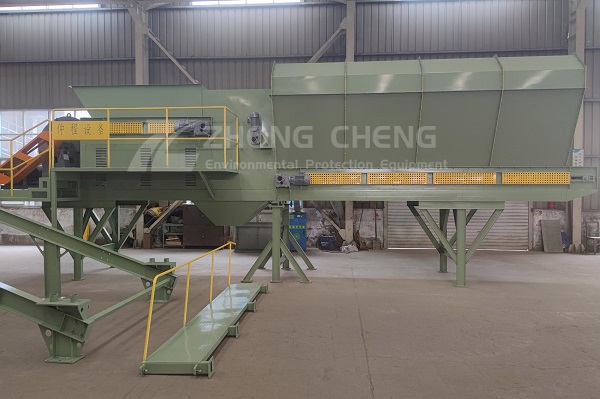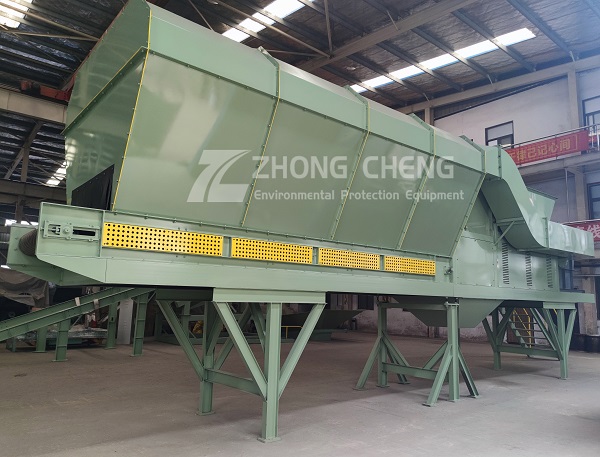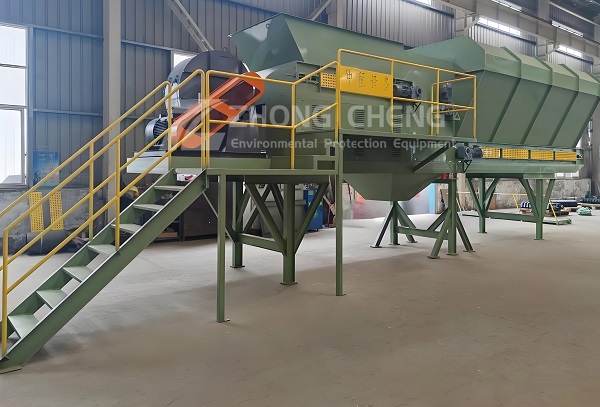Preface: The wind separator is a highly efficient material separation equipment that works based on the difference in the motion characteristics of different materials in the air flow. It uses the airflow generated by the fan to separate the light impurities and heavy particles in the material through the difference in suspension speed between the material and the impurities, so as to achieve the purpose of cleaning and classification. The wind separator is widely used in many fields such as waste management, recycling, construction, mining, food processing, and renewable resource utilization. It has the advantages of high efficiency, energy saving, environmental protection, easy operation, and strong adaptability.

Wind Sifter Separator
A. The sorting methods of the wind separator (also known as the wind sifter) are mainly as follows:
1. Positive pressure sorting: Use controllable positive pressure airflow to blow and sort the material. In this process, light materials (such as paper, plastic bags, films, etc.) will be blown to one side or upward, while heavy materials will continue to move along the original path or fall downward due to inertia or gravity, thereby achieving separation.
2. Negative pressure sorting: Negative pressure sorting uses negative pressure airflow (i.e. suction) to sort materials. The negative pressure environment is usually achieved by forming a low-pressure area inside the equipment. When the material enters this area, the light material will be sucked into the airflow, while the heavy material will remain in place or be less attracted due to its high density, thus achieving separation. This method is characterized by no dust leakage and is environmentally friendly.
3. Positive and negative pressure combined sorting: Positive and negative pressure combined sorting is a combination of positive pressure sorting and negative pressure sorting. In actual operation, the intensity and direction of positive and negative pressure can be flexibly adjusted according to the characteristics and sorting requirements of the material to achieve more efficient and accurate sorting. This method can handle more complex and diverse materials and improve sorting efficiency and accuracy.
These sorting methods of the air separation screening machine are based on the principle of aerodynamics and are separated according to the different densities of the materials. In actual applications, it is necessary to select the appropriate sorting method and parameter settings according to the characteristics and requirements of the materials to achieve the best sorting effect. At the same time, the wind sifter separator also has the advantages of low power, low noise, large processing capacity, high efficiency, and good sorting effect. It can be widely used in large-scale processing in large, medium and small garbage treatment plants, resource recycling stations and other places.
B. Processing capacity of wind sifter separator
The processing capacity of wind sifter separator varies depending on the model, material properties, operating conditions and design specifications. The following is a detailed analysis of the processing capacity of wind sifter separator:

Wind Sifter Separator
a. Processing capacity range
1. Small wind sifter separator:
The processing capacity per hour is usually between several tons and tens of tons.
Suitable for small-scale production or laboratory scenes.
2. Medium-sized wind sifter separator:
The processing capacity per hour can reach tens of tons to hundreds of tons.
Meet the needs of most industrial production.
3. Large wind sifter separator:
The processing capacity per hour can exceed hundreds of tons, or even thousands of tons.
Suitable for high-capacity scenes such as large mines and metallurgical enterprises.

Wind Sifter Separator
b. Influencing factors
1. Material properties: The density, particle size, humidity and other characteristics of the material will affect the processing capacity of the air separation screening machine. For example, materials with high humidity may require longer drying time, thereby reducing the processing capacity.
2. Operating conditions: The operating parameters of the equipment, such as fan power, screen drum speed, etc., will also affect the processing capacity. Reasonable operating parameters can ensure the efficient operation of the equipment.
3. Equipment maintenance: Regular maintenance and care of the equipment are essential to maintain its processing capacity. Worn parts and blocked air ducts may reduce the processing capacity.
The processing capacity of the air separation screening machine is a comprehensive indicator affected by many factors. When purchasing and using the air separation screening machine, it is necessary to select the appropriate model and parameter settings according to actual needs and material characteristics. At the same time, regular maintenance and care are also the key to ensure efficient operation of the equipment and extend its service life.
PS: With the continuous advancement of technology, the design and performance of the wind sifter separator are also constantly improving to meet the needs of more efficient and environmentally friendly production. In short, the wind sifter separator plays an important role in modern industrial production and resource recycling.
Save Time! Get A Detailed Quotation Quickly.
